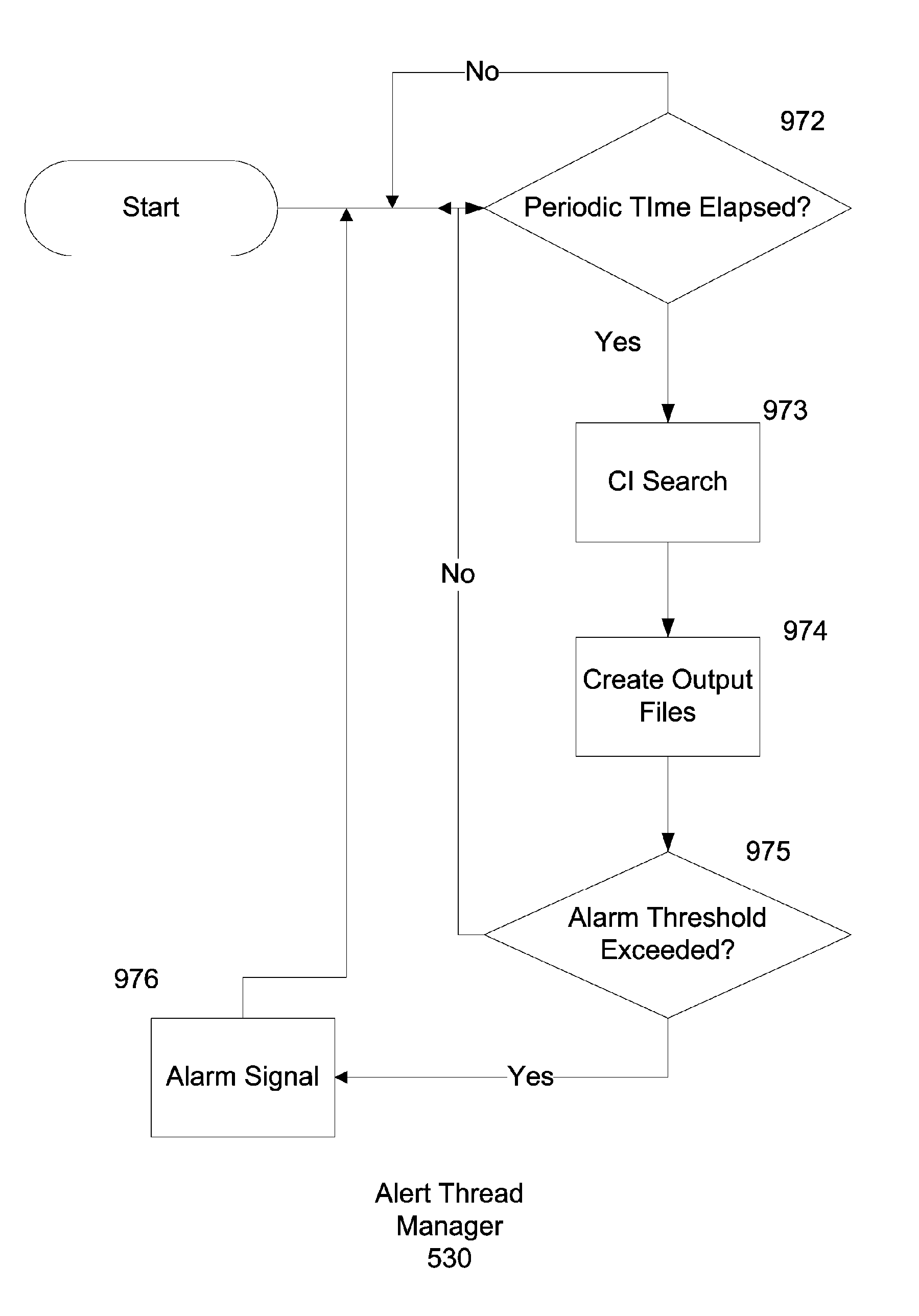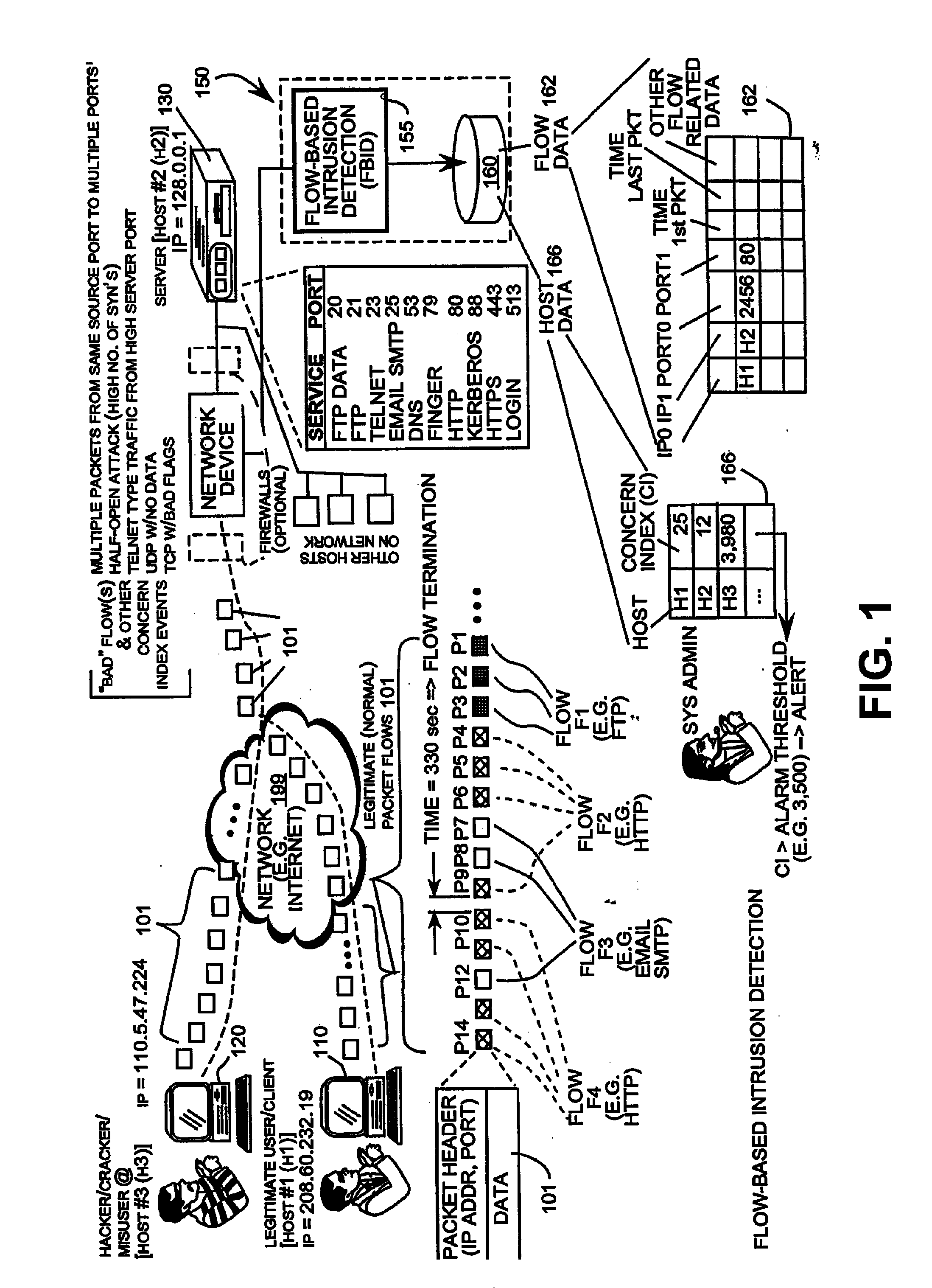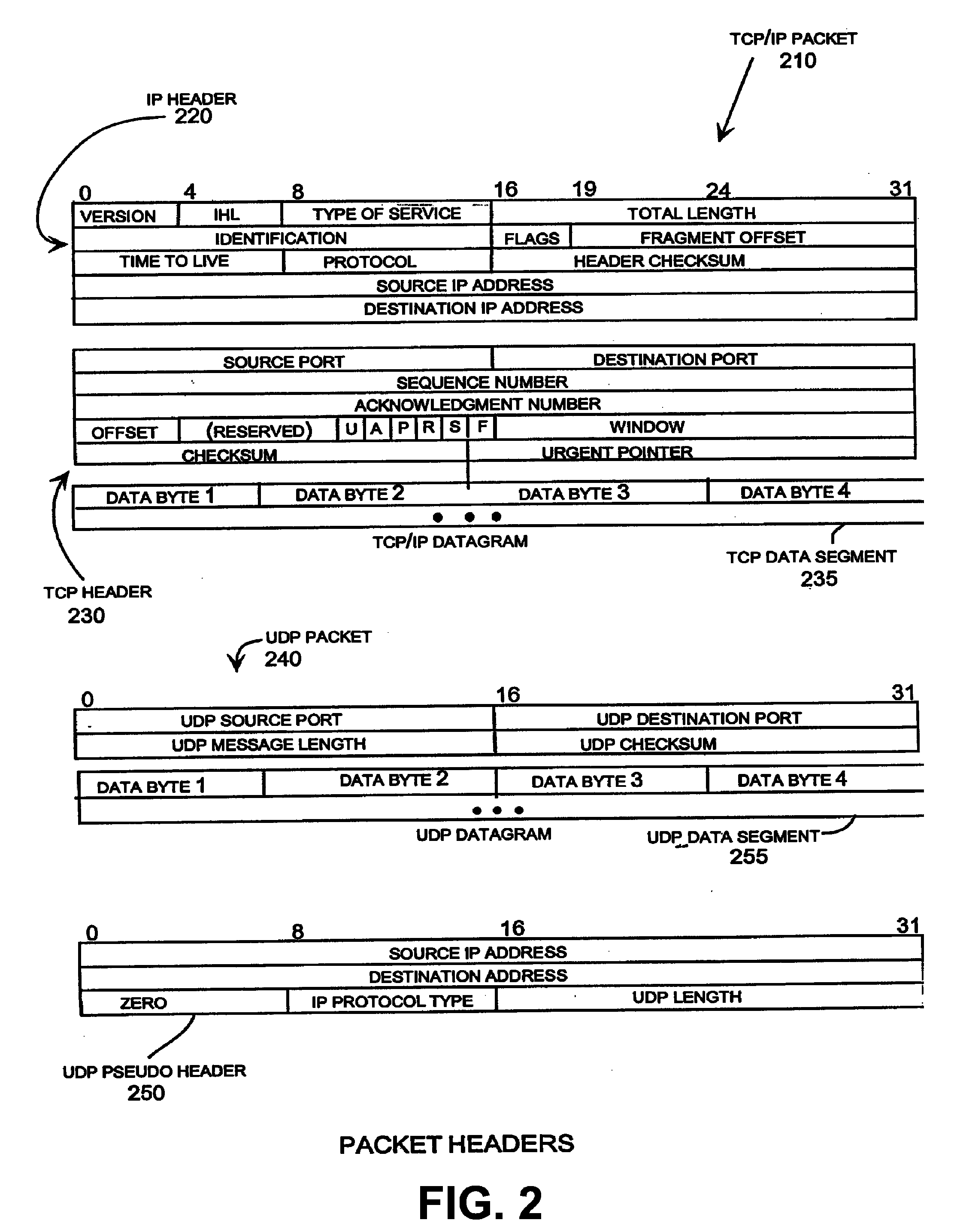Packet Sampling Flow-Based Detection of Network Intrusions
- Summary
- Abstract
- Description
- Claims
- Application Information
AI Technical Summary
Benefits of technology
Problems solved by technology
Method used
Image
Examples
Embodiment Construction
[0040] The described embodiment discloses a system that provides an efficient, reliable and scalable method of detecting network intrusions by analyzing communication flow statistics. The network intrusions are detected by a flow-based engine that characterizes and tracks network activities to differentiate between abnormal activity and normal communications. Flow-based detection does not rely on analyzing the data of packets for signatures of known attacks. Analyzing character strings for known attacks is extremely resource intensive and does not protect against new unknown attacks. Instead, the present intruder detection is accomplished by analyzing communication flows to determine if the communication has the flow characteristics of probes or attacks. Those skilled in the art will readily appreciate that numerous communications in addition to those explicitly described may indicate intrusion activity. By analyzing communications for abnormal flow characteristics, attacks can be d...
PUM
 Login to View More
Login to View More Abstract
Description
Claims
Application Information
 Login to View More
Login to View More - R&D
- Intellectual Property
- Life Sciences
- Materials
- Tech Scout
- Unparalleled Data Quality
- Higher Quality Content
- 60% Fewer Hallucinations
Browse by: Latest US Patents, China's latest patents, Technical Efficacy Thesaurus, Application Domain, Technology Topic, Popular Technical Reports.
© 2025 PatSnap. All rights reserved.Legal|Privacy policy|Modern Slavery Act Transparency Statement|Sitemap|About US| Contact US: help@patsnap.com



